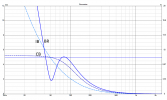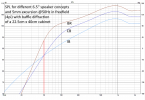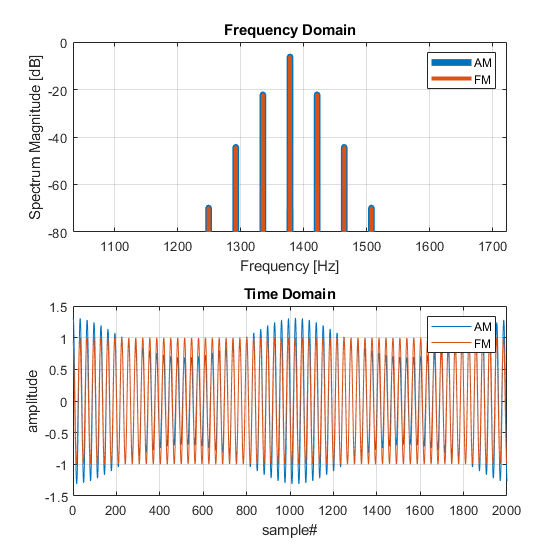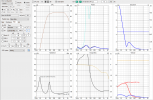Aren't these two signals both distorted @Purifi? I hear the modulation in both. I think the idea @Purifi is that IMD and Doppler go hand in hand. PLus they make high excursion drive units, so they have a vested interest in the ways this is discussed that some others may not.
Linkwitz's take is in section 'J'
Frontiers
His stuff is indeed older now and he did not have the full suite of equipment available today.
Linkwitz based his example on a 6.5'' woofer with +-5mm excursion. This achieves about 86dB SPL in the free field. But which speaker concept is this based on?
For this I have compared three concepts, BR, CB, and OB with a small baffle of 22.5cm x 40cm common for shelf speakers.
In all three concepts the SPL at 50Hz was chosen so that there was always 5mm excursion (for the BR concept the tuning frequency prevents large excursions at 50Hz, so the SPL was increased until 5mm excursion was reached near 50Hz).

This results in the following SPL at 50Hz for the loudspeakers in the free field:

For the OB and CB concept, this results in an SPL of 86-87dB at 50Hz - many CB or OB speakers with a single 6.5'' woofer are unlikely to exist. For the BR concept, which is the standard case, the SPL for +-5mm excursion around 50Hz is about 93-94dB@1m at free field.
In a listening room with two speaker in stereo and additionally some room load this corresponds to an SPL of close to 100dB@1m at 50Hz.
For frequencies above 50Hz, the SPL increases depending on the XO tuning and should be around 100-106 dB@1m.
What I mean is that Doppler distortion is not a problem at all for most listeners of 6.5'' bookshelf speakers, since the sound pressure levels are hardly reached until DD becomes dominant/audible.
If HD3 is just that HD3 then a difference between 210% and 200% shall not be audible.
What I meant is that it makes a difference whether a single instrument uses distortion as an effect or the speaker adds distortion to every recording (all clean vocals and instruments) all the time.
Would you (all!) mind to take the test? But do not follow the instructions fully: "Put on a pair of headphones and listen to both. I’ll leave you to draw your own conclusions."
Please try on your speakers in-room.
I took the test with headphone and speaker. Both signals showed audible distortion, but in both cases the FM signal was less disturbing. The more room influence is added (i.e. the worse my listening position is), the more the AM and FM signals converge.
However, one should also keep in mind here what the conditions are for the Purifi listening example. The carrier frequency is 1.4kHz, the modulation frequency 43Hz and the excursion +-12.5mm. Therefore delta f = 2*pi*fL*fH*Xp / c = 13.8 Hz. So the example from the Purifi Blog is much more worse then the
example Linkwitz makes.
This corresponds to an SPL of around 92dB@43Hz@1m in the free field for a shelf speaker with PR. In stereo and with room load effect this should be close to 100dB@1m at 43Hz. This is already outside the range of use for a bookshelf speaker with 6.5'' woofer.
But of course, for a very good driver with extremely low distortion, Doppler distortion is a natural limit that cannot be undercut.
So, yes, theoretically the Doppler effect is a problem, but for 2-way bookshelf speakers, if operated in the intended volume range, rather less.
If one want to listen at high SPL with a 2-way BR concept, you need a 15'' woofer with XO to a horn around 1.2kHz.
With a baffle of 40cm x 70cm you need just 4mm excursion for 105dB@40Hz@1m.
According to Linkwitz delta f = 2*pi*40*1200*Xp / c = 3.5 Hz.
If the listening room has a normal T60 decay time of 0.3-0.4 s (Linkwitz used with 0.5s a really bad one). My room has T60 = 0.37 s (without any damping treatment), this results in a bandwidth of BW = 2.2 / T60 = 5.9Hz. And thus then 3dB / (5.9/2)Hz = 1 dB/Hz. Thus in the worst case 3.5Hz * 1dB/Hz = 3.5 dB amplitude change at 1.2kHz at 105dB@40Hz@1m - at these SPL no one cares.
The amplitude change of the Purifi listening example @1.4kHz would be in my room 13.8Hz * 1dB/Hz = 13.8dB.
At normal SPL, Doppler distortion is not a thing.



 In the end, he offers no way to ensure you have improved your investment with his extensive mods either.
In the end, he offers no way to ensure you have improved your investment with his extensive mods either.

